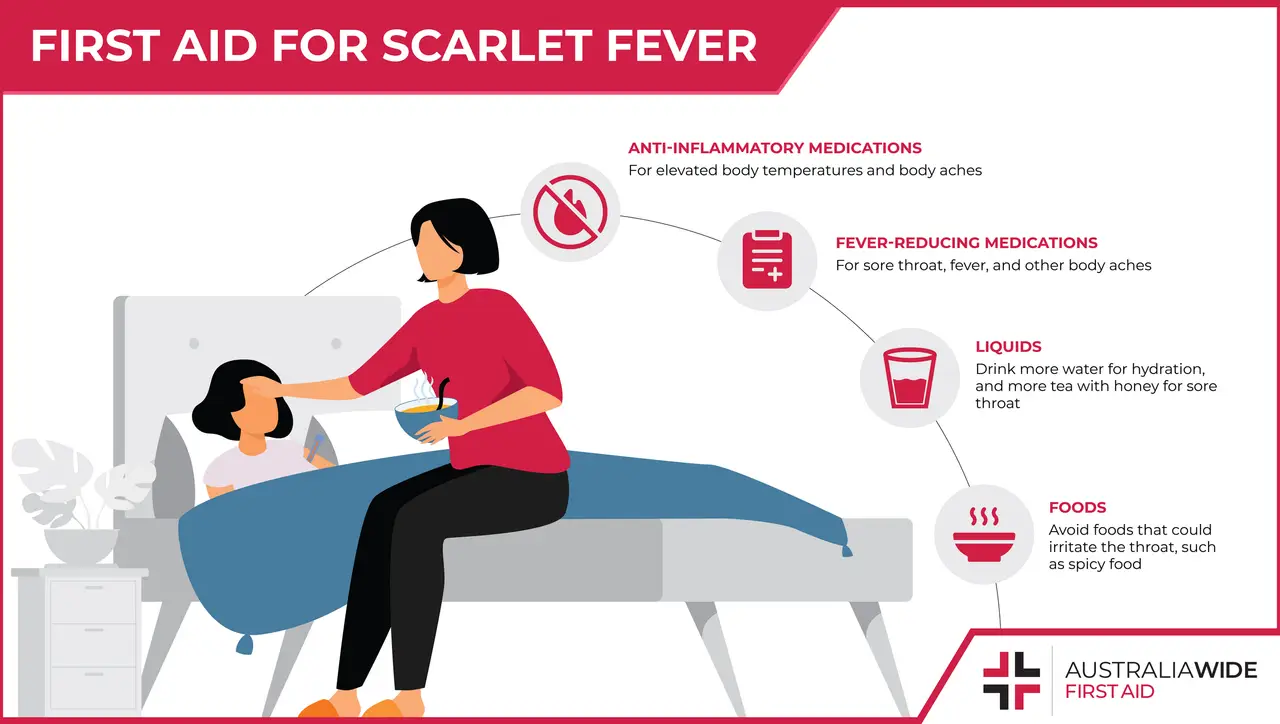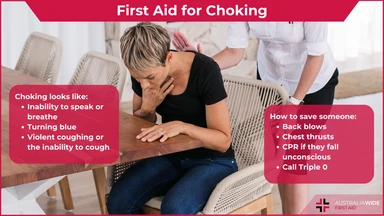First Aid for Scarlet Fever: Prevention, Recognition, and Treatment


Scarlet fever is a bacterial infection caused by group A streptococcus bacterium.
Scarlet fever, also known as scarlatina, is a bacterial infection caused by group A streptococcus bacterium.
Group A strep bacteria commonly colonize the nose and throat, not always causing illness. But when someone has been infected with group A strep it means that they are exhibiting symptoms and can spread the infection to others. It is the same bacteria responsible for "strep throat" infection.
The difference between scarlet fever and strep throat is clearly defined. If a rash develops over the face, underarms, groin, hands, or other parts of the body, then the illness has progressed to scarlet fever. The rash develops because of a toxin secreted by the bacteria.
Scarlet fever symptoms typically begin within 2 to 5 days of bacterial transmission.
Symptoms most often include:
In most cases, the rash occurs within 1-2 days of symptoms onset, but in some cases, the rash may appear as a first symptom or even up to a week after symptoms begin.
The rash typically presents first on the face, underarms, and groin before spreading to other parts of the body. A red rash begins as flat spots that rise over time into a rough, diffuse inflammation. As symptoms begin to resolve, you may experience peeling of the affected skin.

Fortunately, scarlet fever does not pose the same mortality risks to our population as it did many years ago. Prompt treatment with antibiotics usually resolves the illness within 2 to 5 days. If strep throat or scarlet fever is suspected, the medical team will first complete a swab to identify what type of bacteria is causing the infection. If the swab test reveals an infection from group A strep, the antibiotics prescribed by your physician will specifically target those bacteria and you should begin to feel a relief of symptoms within 24-72 hours. Prompt use of antibiotics after identification of a group A strep illness typically prevents the development of scarlet fever.
Other efforts to prevent the spread of infection include the following:

Treatment for scarlet fever includes a round of antibiotics prescribed by a doctor. Antibiotics are effective for shortening the duration of symptoms, reducing the likelihood of transmission to others, and reducing the chances of further complications.
When treated with antibiotics you may experience side effects such as nausea and diarrhea. Discuss the possible side effects with your doctor or pharmacist so that you know what to expect.
It is important that you take antibiotics as prescribed for the duration of the therapy, even after symptoms have resolved, to ensure that the bacterial infection is appropriately treated.
Other first aid therapies that may help reduce symptoms of scarlet fever include:
Children and youth are most at risk for strep throat and scarlet fever because of their closeness of contact which increases the likelihood of transmission of bacteria.
Due to the contagious qualities of a bacterial illness, avoid attending large gatherings where you could inadvertently spread the bacteria. Keep children home from school or daycare at least until treatment has been initiated for 48 hours and his/her fever has resolved.
For more information on hand washing and how it helps to prevent the spread of infection, check out our hand washing resources in our article library.
For more information on first aid, check out the Australia Wide First Aid article library and first aid courses.
https://www.cdc.gov/groupastrep/diseases-public/scarlet-fever.html https://www.healthywa.wa.gov.au/Articles/S_T/Scarlet-fever

October 13, 2023
Choking occurs when an object or a piece of food becomes lodged in the throat, blocking the airway. The adult or child will have difficulty breathing, and may lose consciousness. Quick and effective action is essential to prevent severe consequences and death.

September 22, 2023
Knowing how to provide first aid for fluid draining from an ear is crucial to alleviate discomfort and potentially prevent complications.

July 31, 2023
This article covers treatment/first aid for nose bleeds, and also covers all of the common misconceptions and myths about treating a bleeding nose.